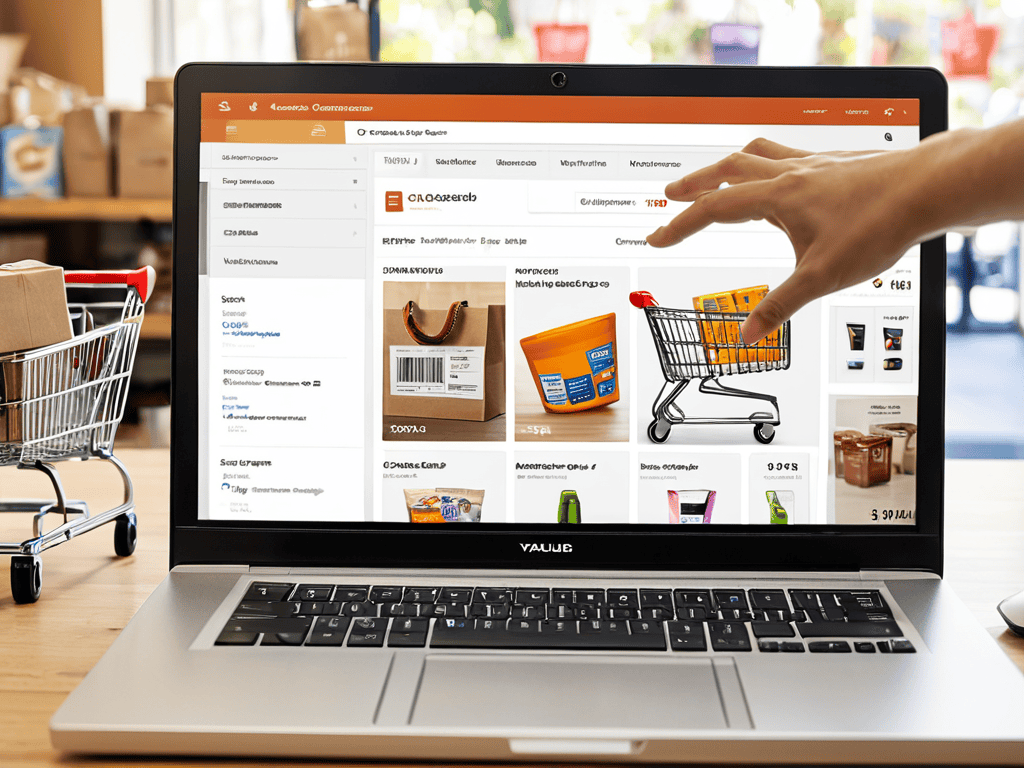I still remember the day I realized that my business was leaking money like a sieve, all because I didn’t understand the concept of a guide to understanding and improving customer lifetime value (CLV). It’s a common myth that customer lifetime value is just about making a quick sale, but the truth is, it’s about building a long-term relationship with your customers. I used to think that as long as I was getting new customers in the door, my business was thriving, but I was neglecting the fact that it costs five times more to acquire a new customer than to retain an existing one.
As someone who’s been in the trenches, I want to share my honest, no-hype advice on how to unlock the secrets of customer lifetime value. In this article, you’ll learn how to calculate your customer lifetime value, identify areas where you can improve, and implement strategies to increase customer loyalty and retention. You’ll get practical tips on how to create a customer-centric approach that will make your customers love you forever. By the end of this guide, you’ll have a clear understanding of how to use customer lifetime value to drive business growth and profitability.
Table of Contents
- Guide Overview: What You'll Need
- Step-by-Step Instructions
- Unlocking Clv Secrets
- From Transactions to Lifelong Relationships: 5 Essential Tips to Boost Customer Lifetime Value
- Key Takeaways for Unlocking Customer Lifetime Value
- The Heart of Customer Loyalty
- Unlocking the Power of Customer Lifetime Value
- Frequently Asked Questions
Guide Overview: What You'll Need

Total Time: 2 hours 30 minutes
Estimated Cost: $0 – $100
Difficulty Level: Intermediate
Tools Required
- Computer (with internet access)
- Spreadsheet Software (e.g., Microsoft Excel, Google Sheets)
- Customer Relationship Management (CRM) Software (optional)
Supplies & Materials
- Customer Data (existing customer information)
- Calculators (for manual calculations)
- Whiteboard or Notebook (for brainstorming and note-taking)
Step-by-Step Instructions
- 1. First, define your customer segments to understand who your most valuable customers are. This involves analyzing your customer database to identify demographics, purchase history, and behavior patterns. By doing so, you’ll be able to tailor your marketing efforts and improve customer satisfaction, which is crucial for increasing customer loyalty.
- 2. Next, calculate the average order value (AOV) of your customers. This is done by dividing the total revenue by the number of orders. Understanding your AOV helps you determine how much each customer is worth to your business over a certain period. It’s essential to track this metric regularly to identify trends and areas for improvement, ultimately leading to increased revenue.
- 3. Then, determine the purchase frequency of your customers. This can be calculated by dividing the number of orders by the number of unique customers. Knowing how often your customers make purchases helps you develop effective marketing strategies to encourage more frequent buying, such as loyalty programs or personalized offers.
- 4. After that, estimate the customer lifespan, which is the average duration a customer continues to buy from your business. This can be calculated by analyzing the purchase history of your customers over time. Understanding the customer lifespan is vital for determining the long-term value of each customer and planning retention strategies.
- 5. Calculate the customer acquisition cost (CAC) to understand how much it costs to acquire a new customer. This involves adding up all the costs associated with acquiring new customers, such as marketing and advertising expenses, and dividing that total by the number of new customers acquired. Knowing your CAC helps you optimize your marketing budget and ensure that your customer acquisition efforts are cost-effective.
- 6. Next, calculate the customer lifetime value (CLV) using the formula: CLV = (AOV x purchase frequency) x customer lifespan – CAC. This formula provides a comprehensive picture of the total value each customer brings to your business over their lifetime. By understanding your CLV, you can make informed decisions about how much to invest in retaining each customer and maximizing their value.
- 7. Finally, develop targeted marketing strategies to improve customer lifetime value. This can include personalized marketing campaigns, loyalty programs, and exceptional customer service. By focusing on building strong relationships with your customers and providing them with value, you can increase their loyalty and retention, ultimately leading to long-term growth and success for your business.
Unlocking Clv Secrets

To truly unlock the full potential of your customers, it’s essential to look beyond the basic calculations and delve into the world of customer segmentation strategies. By dividing your customer base into distinct groups based on their behavior, preferences, and demographics, you can create targeted marketing campaigns that resonate with each segment. This approach enables you to tailor your messaging, offers, and experiences to meet the unique needs of each group, ultimately driving higher engagement and loyalty.
As you explore the realm of personalization techniques for clv, consider the impact of tailored communications on your customers’ perception of your brand. By addressing their individual needs and preferences, you can create a sense of connection and belonging, fostering a deeper relationship that translates into long-term loyalty. When implemented effectively, personalization can become a key differentiator for your brand, setting you apart from competitors and driving growth.
By focusing on improving customer retention rates, you can significantly boost your bottom line. It’s no secret that retaining existing customers is far more cost-effective than acquiring new ones. By investing in strategies that promote loyalty and satisfaction, you can reduce churn and increase the lifetime value of your customers. This, in turn, can inform your clv metrics and benchmarks, providing a more accurate picture of your customers’ worth and helping you make data-driven decisions to drive growth.
Calculating Clv Formula
To truly grasp the Potential of your customer base, you need to crunch some numbers. The CLV formula is a simple yet powerful tool: CLV = (Average Order Value x Purchase Frequency) – Customer Acquisition Cost. By plugging in these key metrics, you’ll get a clear picture of each customer’s worth to your business over time.
This calculation is the foundation of understanding your customers’ lifetime value, allowing you to make informed decisions about marketing strategies and resource allocation.
Personalization for Clv Growth
As you delve deeper into the world of customer lifetime value, it’s essential to stay up-to-date with the latest trends and strategies. One often overlooked aspect of CLV is its connection to customer hobbies and interests, which can be a powerful tool for personalization. For instance, understanding that a significant portion of your customer base enjoys gardening can help you tailor your marketing efforts and improve customer engagement. If you’re looking for inspiration on how to leverage customer hobbies, I recommend checking out the community at hobbyladies, where you can find valuable insights into what drives customer passion and loyalty, and discover new ways to nurture long-term relationships with your customers, ultimately leading to a significant increase in their lifetime value.
To truly unlock the secrets of customer lifetime value, personalization is key. It’s about tailoring your approach to each individual customer, making them feel seen and heard. By using data and analytics, you can create targeted marketing campaigns and offers that resonate with your customers on a deeper level. This not only increases loyalty but also encourages repeat business.
By personalizing the customer experience, you can build strong, long-lasting relationships that drive CLV growth. It’s about understanding what makes each customer tick and using that knowledge to create a unique and memorable experience. Whether it’s through personalized emails, special offers, or tailored content, the goal is to make your customers feel valued and appreciated.
From Transactions to Lifelong Relationships: 5 Essential Tips to Boost Customer Lifetime Value
- Focus on delivering exceptional customer experiences to encourage loyalty and retention
- Implement personalized marketing strategies to cater to individual customer needs and preferences
- Develop a customer loyalty program that rewards repeat business and long-term engagement
- Utilize data analytics to gain insights into customer behavior and preferences, informing targeted marketing efforts
- Prioritize ongoing customer communication and feedback to identify areas for improvement and optimize the customer journey
Key Takeaways for Unlocking Customer Lifetime Value
Understanding and calculating customer lifetime value is crucial for developing effective business strategies that foster long-term customer relationships
Personalization plays a significant role in CLV growth, as it allows businesses to tailor their services and communications to meet the unique needs and preferences of each customer
By implementing CLV-centric approaches, businesses can transition from mere transactional interactions to building lasting connections with their customers, ultimately driving loyalty, retention, and revenue growth
The Heart of Customer Loyalty
Customer lifetime value is not just a metric, it’s a mindset – it’s about transforming transactions into relationships, and strangers into brand ambassadors who will champion your business for years to come.
Alexandra J. Miller
Unlocking the Power of Customer Lifetime Value

As we’ve journeyed through this guide, we’ve uncovered the foundational elements of customer lifetime value, from calculating CLV formulas to implementing personalization strategies for growth. We’ve seen how understanding customer needs and preferences can help businesses tailor their approaches, leading to increased loyalty and, ultimately, revenue. By applying these principles, companies can transform their relationships with customers, fostering a sense of community and mutual benefit. This shift in perspective can have a profound impact on business operations, from marketing and sales to product development and customer support.
As you embark on your own journey to improve customer lifetime value, remember that it’s a continuous process of learning, adaptation, and innovation. By staying attuned to your customers’ evolving needs and desires, you can create a loyal following that will advocate for your brand and drive long-term growth. So, don’t just view your customers as transactions – see them as valued partners in your business’s success, and watch your relationships flourish as a result.
Frequently Asked Questions
How do I determine the most effective channels to invest in for improving customer lifetime value?
To determine the most effective channels, track where your highest-value customers come from and engage with your brand. Analyze their journey, from first touch to repeat purchase, and identify the channels that drive the most loyal and profitable relationships. Invest in those channels to maximize your CLV growth.
What role does customer retention play in increasing overall customer lifetime value?
Customer retention is the secret sauce to skyrocketing CLV. By keeping your customers happy and loyal, you reduce churn and increase repeat business, ultimately driving up their lifetime value. It’s not just about acquiring new customers, but about nurturing the ones you already have, turning them into lifelong fans who’ll keep coming back for more.
Can I apply the same customer lifetime value strategy across different product lines or services?
Not quite – each product line or service has its unique customer base and needs. You’ll want to tailor your CLV strategy to each one, considering factors like purchase frequency and customer behavior. This personalized approach will help you maximize loyalty and revenue across your different offerings.







